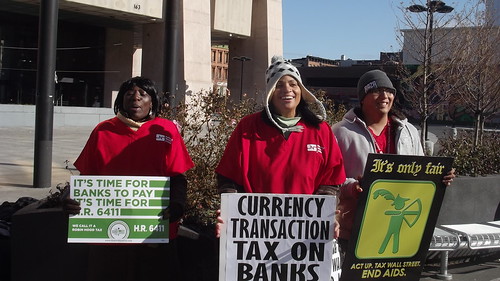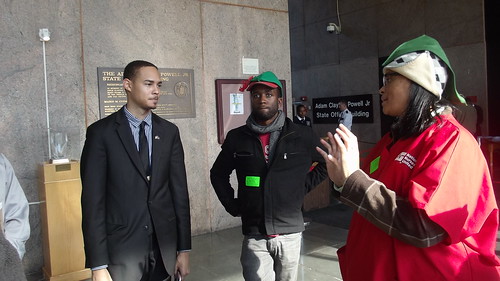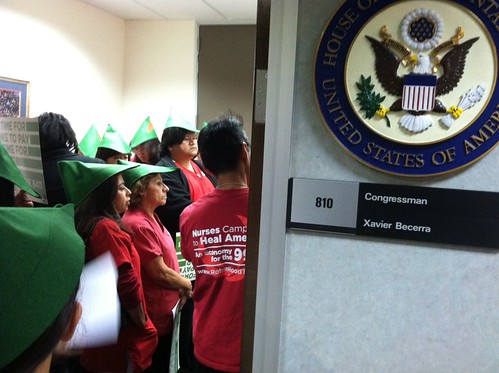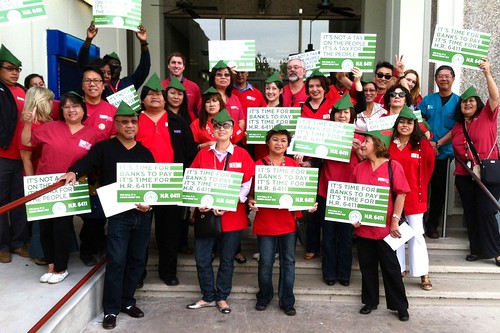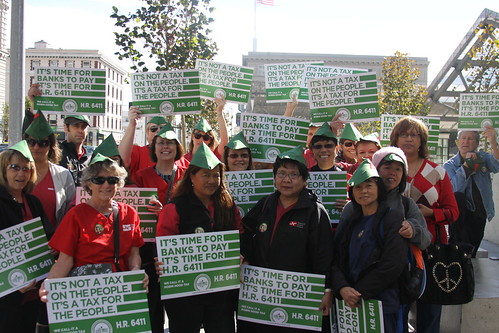Thank you so much to those who have responded to our Registered Nurse Response Network (RNRN/National Nurses United) request following the Hurricane Sandy emergency.

In the spirit of Thanksgiving, we are truly grateful for the dedication of our volunteers.
Currently, these efforts are being handled by local organizations, with the New York State Nurses Association (NYSNA) taking a key leadership role. If volunteers from out of the local area are needed, we will contact you. The affected RNs and patients are incredibly grateful for your continued support.
Make a Contribution to the RNRN fund established to support disaster relief services. To donate by mail: Make checks payable to CNF/RNRN and mail them to: CNF/RNRN, 2000 Franklin St. Oakland, CA 94612.
Nearly three weeks after the storm, the affected areas continue to have urgent, unmet medical and public health needs. FEMA and HHS officials have told volunteer nurses, doctors and health advocates that the federal government’s hands are tied until the city and state governments request more assistance.
See a video here on NYSNA’s response to Hurricane Sandy.
RNRN and NYSNA Response
In the immediate aftermath of the storm, a group of dedicated NYSNA nurse volunteers fanned out to the hardest hit communities. NYSNA opened up a deployment site that operated out of the organization’s RV located on Miller Field on Staten Island. They began sending RN teams door to door to determine people needs, and provided much needed care to many residents affected by the storm. At this time they are filling the volunteer needs with New York City area RNs, but may need out of state RNs at a later date.
RNRN has been on the ground supporting the efforts of the New York State Nurses Association (NYSNA) to assess the needs at different locations in order for RN volunteers to be fully utilized to fill the long-term public health care needs to the communities most affected.
Make shift clinics and door to door assessment teams have been organized by an array of community organizations ranging from Occupy Sandy, NYSNA, and Physicians for a National Health Plan, People’s Medical Relief, and Doctors without Borders to the neighborhood churches and synagogues.
Striking Similarities to Katrina—
There has been a lack of coordination by government and traditional disaster relief organizations such as the Red Cross, the Medical Reserve Corps, Department of Health, and FEMA. The outlying areas closest to the storm that were the hardest hit are still in dire need of basic services and there is a long-term public health need that RNs can fill.
Poor, middle and working class residents are left to their own devices, and makeshift “soup” kitchens pop up on block after block. Most apartments are abandoned, though there are still some residents, even on the lower floors where there is water. There are many elderly residents who are of particular concern, especially the ones on the higher floors. The stairways are concrete, narrow and pitch black.
The lack of running water, heat and electricity that is slowly coming back to these communities after more than three weeks has created a public health crisis that will be around for a long time—the potential of hypothermia as the temperatures drop, lack of clean running water and fresh food.
NYSNA, along with PNHP, Occupy Sandy, and other community groups, held a press conference at City Hall on Friday, November 16 to send the message to Mayor Bloomberg that, “As RNs we do not accept the conditions patients are forced to live in. Ask that the city immediately request resources from the state and federal governments to: provide life-saving medications and supplies and provide financial and human resources to rebuild existing community health care infrastructures.”
Many hospitals and clinics have been closed due to damage from Hurricane Sandy, and some won’t be open for weeks or months.
Thank you for your ongoing concern and support for those RNs and patients affected by Hurricane Sandy.
Contribute to the RNRN fund established to support disaster relief services.
To donate by mail: Make checks payable to CNF/RNRN and mail them to: CNF/RNRN, 2000 Franklin St. Oakland, CA 94612.
RNRN Disaster Relief Fund: National Nurses United and the Registered Nurse Response Network (RNRN) work to send nurses to disaster stricken areas both inside the U.S. and internationally. Please complete this secure donation form and share it with friends to ensure that RNs are among the first responders. RNRN is a project of the NNU and the California Nurses Foundation, a 501(c)(3) nonprofit. Donations are secure, and tax-deductible to the extent of the law.
Thank you,
Registered Nurse Response Network
California Nurses Foundation
2000 Franklin St.
Oakland, CA 94612
